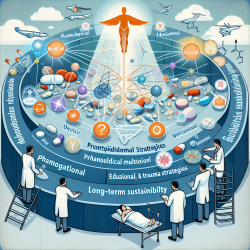As practitioners in the field of speech-language pathology, it is crucial to stay updated with the latest research trends to provide the best outcomes for our patients. The recent study, "Research hotspots and trends of the tele-rehabilitation for stroke survivors based on CiteSpace: A review," offers valuable insights that can significantly enhance our practice, especially when working with stroke survivors.
Key Takeaways from the Research
The study analyzed 968 articles on tele-rehabilitation for stroke survivors published from 2012 to 2022. The findings reveal several key trends and areas of focus:
- Increasing Research Activity: The number of publications has been steadily increasing, indicating growing interest and advancements in this field.
- Geographical Distribution: The United States, Australia, and China are leading in the number of publications, with significant contributions from European countries.
- Popular Technologies: Virtual Reality (VR) and rehabilitation robot technology are among the most researched areas, offering promising avenues for future interventions.
- Collaborative Networks: While there are some cooperative networks among research institutions, there is a need for more extensive academic exchanges and collaborations.
Practical Implications for Practitioners
Understanding these trends can help practitioners like us implement more effective tele-rehabilitation strategies. Here are some practical steps you can take:
- Incorporate VR and Robotics: Given the popularity and effectiveness of VR and rehabilitation robots, consider integrating these technologies into your practice to enhance patient engagement and outcomes.
- Strengthen Collaborations: Engage in academic exchanges and collaborative research projects to stay updated with the latest advancements and improve your practice.
- Focus on Patient-Centered Care: Tailor rehabilitation exercises to individual needs, ensuring they are both engaging and effective. Utilize remote monitoring tools to track progress and adjust interventions as needed.
- Address Barriers: Be mindful of the potential barriers to tele-rehabilitation, such as technology accessibility and patient motivation. Develop strategies to overcome these challenges, ensuring equitable access to care.
Encouraging Further Research
The study highlights the importance of ongoing research in tele-rehabilitation. As practitioners, we should not only implement these findings but also contribute to the body of knowledge through our own research and clinical trials. By doing so, we can help advance the field and improve outcomes for stroke survivors globally.
To read the original research paper, please follow this link: Research hotspots and trends of the tele-rehabilitation for stroke survivors based on CiteSpace: A review.










